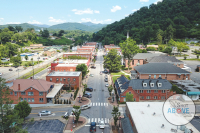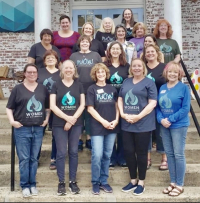There is hemlock, and then there is poison hemlock
 Certain questions inevitably pop up during plant identification outings. One has to do with whether or not eastern hemlock trees are poisonous.
Certain questions inevitably pop up during plant identification outings. One has to do with whether or not eastern hemlock trees are poisonous.
Upon encountering our first eastern hemlock, I’m now disappointed if someone in the group doesn’t ask: “Isn’t hemlock poisonous?”
What the questioner has in mind, of course, is the fact that the Athenian philosopher Socrates is said to have committed suicide by ingesting a drink made from poison hemlock. Insofar as I am aware, however, hemlock trees aren’t toxic — and they don’t grow in Greece.
The poison hemlock associated with Socrates is an herbaceous plant (Conium maculatum) in the carrot family. Mentioned in the Bible, it’s a native of Eurasia that has been naturalized in the Western Hemisphere since colonial times.
Poison hemlock is a large plant (three to eight feet high) that’s much branched, with smooth purple-spotted hollow stems; leaves that are fern-like; and small clusters (umbels) of white flowers. It is also characterized by a rank odor that’s detectable when one is near the plant or has crushed a leaf or stem.
In Common Poisonous Plants and Mushrooms of North America (Timber Press, 1991) the authors, Nancy J. Turner and Adam F. Szczawinski, report that “poison hemlock contains a group of closely related poisonous alkaloids” that “are structurally related to nicotine, and act similarly, producing initial stimulation followed by severe depression of the central nervous system, resulting in paralysis, slowing of the heart, convulsions, and death from respiratory paralysis.”
Related Items
In Charles F. Millspaugh’s Medicinal Plants (James C. Yorston & Co., 1982), I found that “the history of this fetid, poisonous plant dates back to about the fifth century before Christ. From the careful observations of many pharmacographists and historians, there seems little doubt that the Grecian State potion used at Athens as a mode of execution of those condemned to death by the tribunal of Areopagus, was principally, if not wholly, composed of the fresh juice of the leaves and green seeds of this plant.”
Millspaugh then excerpts from Plato’s Phaedo the description of Socrates’ death: “And Crito, hearing this, gave the sign to the boy who stood near; and the boy departing, after some time returned, bringing with him the man who was to administer the poison, who brought it readily bruised in a cup. And Socrates, beholding the man, said: ‘Good friend, come hither; you are experienced in these affairs — what is to be done?’ ‘Nothing,’ replied the man, ‘only when you have drank the poison you are to walk about until a heaviness takes place in your legs; then lie down — this is all you have to do.’”
Poison hemlock is more common in the piedmont region, but it does appear with regularity in fields and waste areas throughout Western North Carolina. If you are a wildflower enthusiast who has been dying (pun intended) to see poison hemlock up close and personal, I can be of assistance.
As I write this on the second day of June in 2015, there’s a sizeable stand of poison hemlock in full bloom just west of Bryson City. Depart U.S. 74 West at Exit 67 and continue past a McDonald’s and a Bojangles straight through the first intersection and across the bridge. After passing the post office and crossing the railroad tracks, turn left on Bryson Walk and proceed 1.5 miles to a Y-shaped intersection where there is a pullover on the right. On the left side of the road — extending all along the embankment — is the poison hemlock, looking as innocent as the day is long.
(George Ellison is a naturalist and writer. He can be reached at This email address is being protected from spambots. You need JavaScript enabled to view it..)









